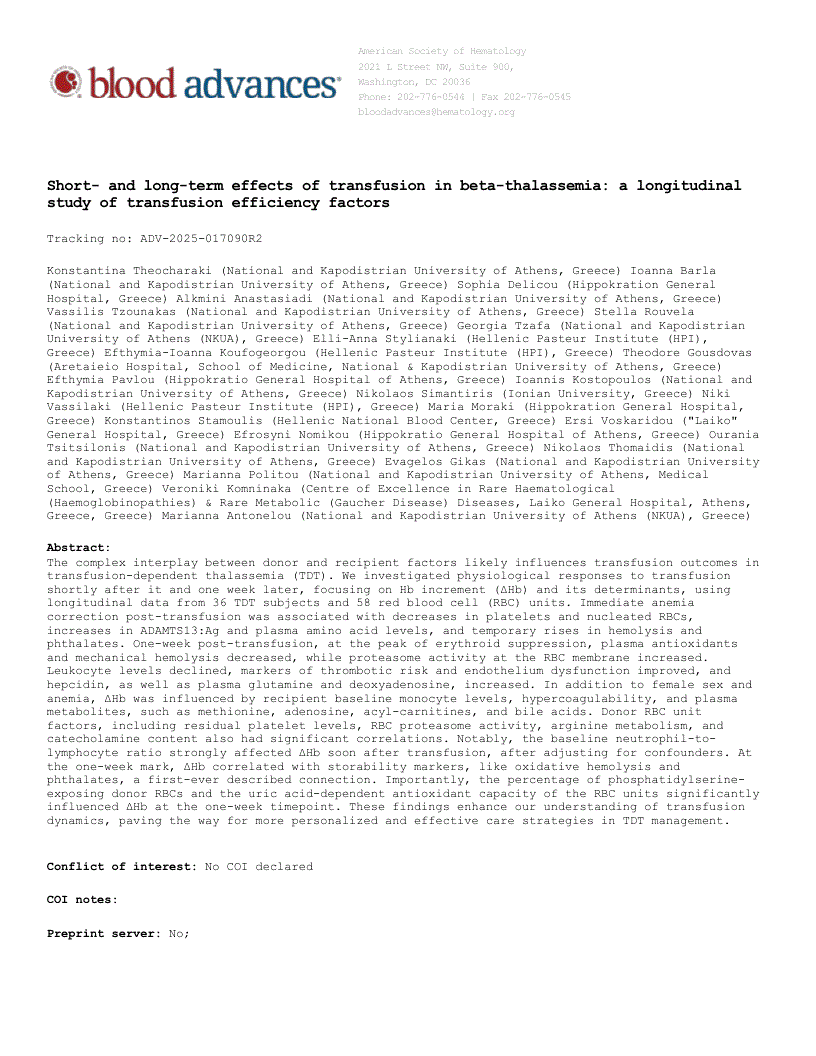Key Points
Blood kinetics across transfusion time in thalassemia reflect more than just the cumulative effects of mixing with blood components
The baseline NLR index, PS exposure on patient and donor RBCs, and the antioxidant capacity of components affect Hb increment in TDT
The complex interplay between donor and recipient factors likely influences transfusion outcomes in transfusion-dependent thalassemia (TDT). We investigated physiological responses to transfusion shortly after it and one week later, focusing on Hb increment (ΔHb) and its determinants, using longitudinal data from 36 TDT subjects and 58 red blood cell (RBC) units. Immediate anemia correction post-transfusion was associated with decreases in platelets and nucleated RBCs, increases in ADAMTS13:Ag and plasma amino acid levels, and temporary rises in hemolysis and phthalates. One-week post-transfusion, at the peak of erythroid suppression, plasma antioxidants and mechanical hemolysis decreased, while proteasome activity at the RBC membrane increased. Leukocyte levels declined, markers of thrombotic risk and endothelium dysfunction improved, and hepcidin, as well as plasma glutamine and deoxyadenosine, increased. In addition to female sex and anemia, ΔHb was influenced by recipient baseline monocyte levels, hypercoagulability, and plasma metabolites, such as methionine, adenosine, acyl-carnitines, and bile acids. Donor RBC unit factors, including residual platelet levels, RBC proteasome activity, arginine metabolism, and catecholamine content also had significant correlations. Notably, the baseline neutrophil-to-lymphocyte ratio strongly affected ΔHb soon after transfusion, after adjusting for confounders. At the one-week mark, ΔHb correlated with storability markers, like oxidative hemolysis and phthalates, a first-ever described connection. Importantly, the percentage of phosphatidylserine-exposing donor RBCs and the uric acid-dependent antioxidant capacity of the RBC units significantly influenced ΔHb at the one-week timepoint. These findings enhance our understanding of transfusion dynamics, paving the way for more personalized and effective care strategies in TDT management.

